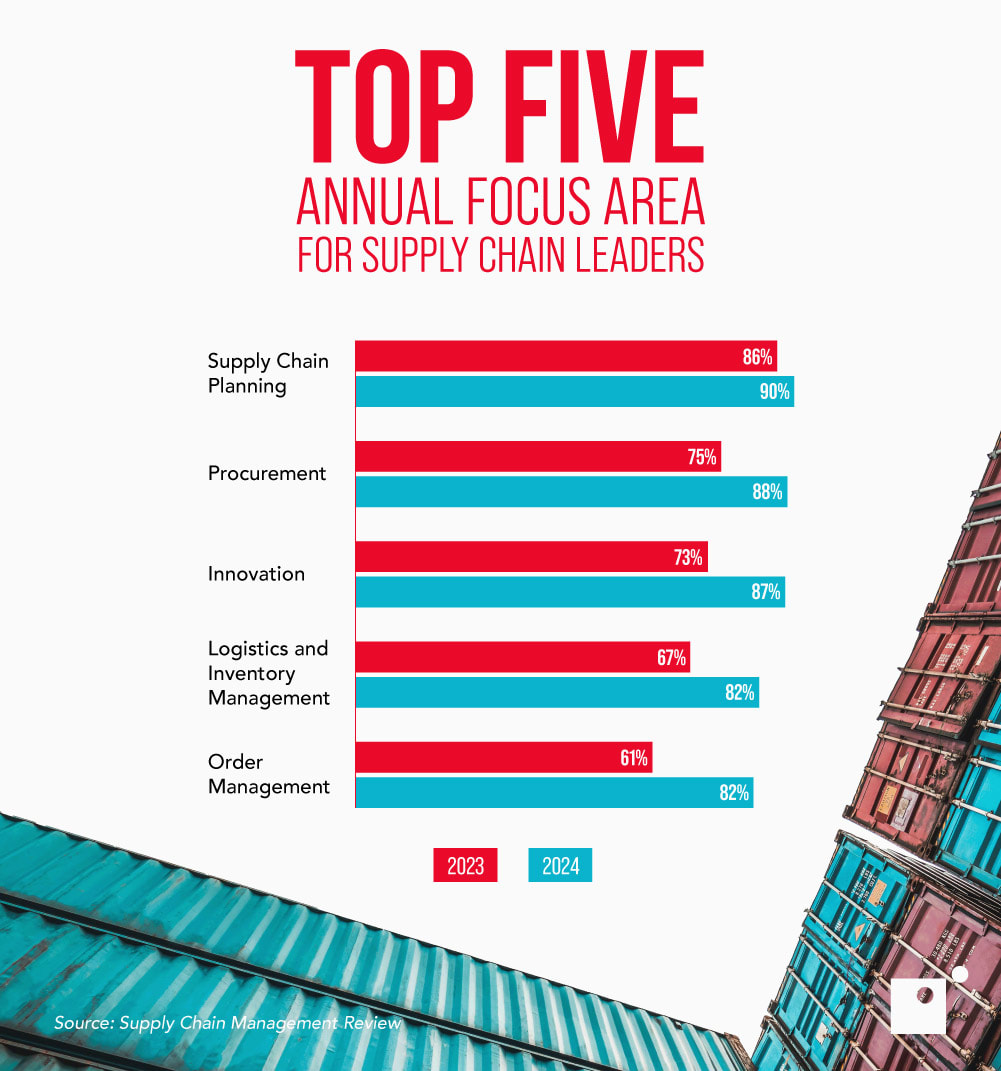Consider coffee beans. The large majority of coffee beans are grown and shipped internationally. Without food distribution technology, that process would be much slower, more difficult, and more costly.
Understanding the role that technology plays in every sector of the market is integral to building streamlined operations that result in higher levels of productivity and cut costs while saving resources.
The food distribution industry is no exception, so join us below as we explore the role of technology in the modern food distribution supply chain.
If you’re curious about what advanced technology can do for your organization, watch Impact’s webinar, How Managed Digital Transformation Solves Real Challenges: An Inside Look Webinar.
The Current State of Food Distribution Technology
Many vendors and organizations involved in the food distribution industry are working on improving and modernizing their tech stacks to meet the demands of the current market. While some larger players, like Sysco, have already invested in and built out a powerful digital presence and online experience for their clients and partners, other players in the industry are still catching up.
Investing in technology-based solutions is a major trend for food distributors, especially as smaller operations use technology and a powerful digital experience to carve out larger market shares.
“There’s an emphasis on technology becoming increasingly central to the way that distributors respond to change. We’ve seen that playing out over the course of the past few years, and we don’t expect it to slow down any time soon—in fact, we expect to see this trend accelerate.”
Considering the role that business agility and the digital experience play in today’s overall marketplace, it goes to reason that all organizations, regardless of industry, are looking to embrace modern technologies that improve operations.
Food Distribution Is a Fragmented Industry
With just five of the largest food distributors accounting for 60% of the market in the United States, there is a clear fragmentation in the food supply chain market.
However, as more businesses in the food distribution industry invest in and adopt modern technologies, they can start to challenge the larger players and win additional market share.
But oftentimes, small operations that start to gain traction are easy targets for larger companies to acquire, purchase, or merge with. While this is an inevitability, and a part of doing business, investing in a powerful and modern tech stack allows organizations to grow and scale more easily.
Let’s take a look at how food distribution technology is making waves and bringing the industry into the era of digitization.
Virtual Inventories
Distributors have to deliver faster now than ever before. The surge in organizations revamping their supply chains by introducing new technology is unlikely to let up anytime soon. Operations relying on outdated technology will soon lose relevance and be harder to maintain.
Virtual inventories are one innovation that aims to streamline food supply chains as quickly as possible.
Virtual inventories work by compiling the available stock across multiple locations into centralized databases accessible by clients, customers, and partners. This allows additional visibility into availability as well as the most efficient route for delivery dispatch.
If you’ve ever wondered how massive operations like Amazon are able to meet such tight deadlines for orders, it’s because they have centralized their entire distribution strategy around the philosophy of virtual inventories.
More SKUs Than Ever
Americans today eat out and order in more than ever before.
“On average, Americans are deciding to order takeout or delivery 4.5 times a month, compared to eating at a restaurant an average of 3 times a month.”
- US Foods Survey -
This means the average American is either eating out or ordering in almost twice a week. Considering this in addition to the estimated 138 million American consumers who regularly order groceries online demonstrates just how many SKUs are in circulation in the food distribution market.
On top of that, food manufacturers and producers are constantly coming out with new flavors and additional product lines.
The end result is that distributors have to ship far more SKUs than at any point in the past in order to meet the demand of both consumers and grocers.
Distributors must have the technology in place that allow them to use digital tools, like predictive analytics, AI, and machine learning to cut waste and streamline operations while preparing for emergency disruptions.
Technology on the Warehouse Floor
It’s important to note that technology in food distribution isn’t only focused on the distribution leg. Technological innovations have also completely revamped warehouse operations.
These technologies include sensors and the Internet of Things generally, predictive analytics, robotic process automation, machine learning, big data, and artificial intelligence.
From automatic monitoring to data analysis that discovers cost-saving opportunities and AI that handles menial repetitive tasks, warehouses are becoming more efficient and less expensive as they continue to integrate sophisticated technologies.
Wrapping Up on Food Distribution Technology
Understanding the role that modern technology plays in elevating operations and creating a powerful brand presence is vital for organizations, regardless of industry, that want to remain relevant with modern customers, clients, and partners.
Here are a few of the main ways that technology is already, and will continue, influencing food distribution operations:
- Food distribution is highly competitive, with giants of the industry implementing modern technology solutions to meet growing consumer demands when it comes to what they eat.
- The industry is fragmented, meaning smaller, more agile operations can use technology to create a competitive advantage and win market share.
- Several new and developing technologies have already been adopted by frontrunners, namely logistics automation, IoT tech, and AI to streamline operations.
- Technology will continue to drive food distribution as the benefits of using digital tools remain apparent for distributors.
Check out Impact’s webinar, How Managed Digital Transformation Solves Real Challenges: An Inside Look Webinar to learn how digital transformation can completely evolve your business.


